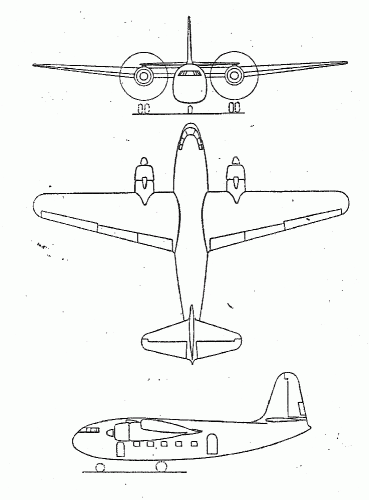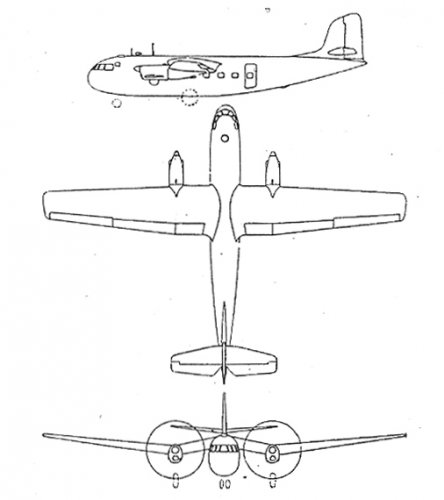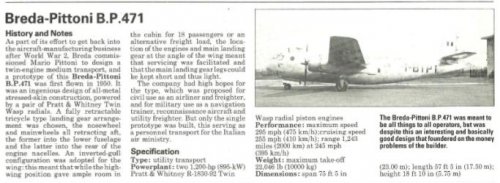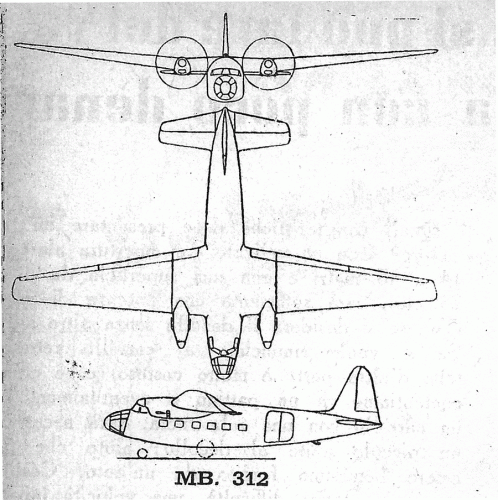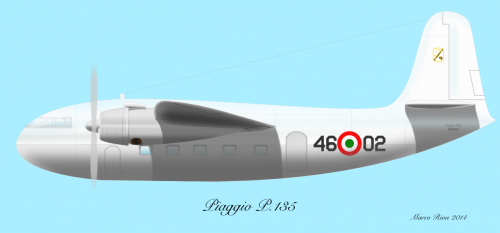- Joined
- 14 June 2006
- Messages
- 2,300
- Reaction score
- 561
In late 1946 the shape of the Italian aeronautical industry was rather dire. According to the Armistice agreement, every new construction was forbidden (modifications and completion of already started airframes was exhempted, and this allow for the "new" G-212s and SM-95s, the modified bombers of the Corrieri Militari, etc). It was expected that ban would have been lifted sometime in 1947, so there was some design and even construction activity (the MB-308, for one, was started well before the lifting of the ban). Anyway, incertitude was great and trust in the Government at an all time low. In this timeframe, it fell like a bolt the news that Ministero dell'Aeronautica RFPed a new construction aircraft to be destined to the night and low visibility flight training, light transport, radiometering and liason roles. the specs were rather "free", except for the engines, that were to be tassatively two Isotta Fraschini Delta III series, a great numbers of which (and spare parts) were in storage from wartime. All the still active aeronautical companies were invited to tender.
Not alla of them responded with designs strictly in adherence to the specs, judging (correctly) that 1600 HPs (two Deltas III) were too low a power for a transport aircraft. Anyway, these were the submission (the * were not to spec):
Caproni Ca-191
Santangelo Orsa
SIAI Marchetti SM-104
Breda-Pittoni BP-471
Macchi MB-312
Piaggio P-135*
SIAI Marchetti SM-105 (first version, non detachable fuselage)*
FIAT G-218*
All sumbission were in by late spring 1947 and winenrs were announced in summer.
The winners were Caproni Ca-191 and the outsider Orsa (Santangelo was a designer working for the Direzione Generale Costruzioni of the Ministero and wasn't new to "answering" the specs he had contributed to draft...). Orsa was to have been built by CAB (Caproni Aeronautica Bergamasca). Orsa wasn't even started, but Ca-191 was built in mock-up form in an emptied Caproni Taliedo (in a really dark atmosphere, with Communist terrorists killing technical and managerial figures linked with the airplane and mechanical industry).
How the Concorso ended ? In musical terms, it was a case of "diminuendo al niente". In January 1948 Santangelo himself wrote an editorial rethorically asking what had happened of the Concorso (if "he" didn't know, who else ?). Breda decided to proceed all the same and, after modifying the original project for use with two more powerful engines, built and flew te BP-471. Caproni abandoned the Ca-191 and concentrated all resources left on the Ca-193 aerotaxi. SIAI abandoned the SM-194 and heavily modified (actually, it was a new design) the 105 transorming it in a detachable pod transport. The others simply faded away. And now, the individual aircrafts.
Not alla of them responded with designs strictly in adherence to the specs, judging (correctly) that 1600 HPs (two Deltas III) were too low a power for a transport aircraft. Anyway, these were the submission (the * were not to spec):
Caproni Ca-191
Santangelo Orsa
SIAI Marchetti SM-104
Breda-Pittoni BP-471
Macchi MB-312
Piaggio P-135*
SIAI Marchetti SM-105 (first version, non detachable fuselage)*
FIAT G-218*
All sumbission were in by late spring 1947 and winenrs were announced in summer.
The winners were Caproni Ca-191 and the outsider Orsa (Santangelo was a designer working for the Direzione Generale Costruzioni of the Ministero and wasn't new to "answering" the specs he had contributed to draft...). Orsa was to have been built by CAB (Caproni Aeronautica Bergamasca). Orsa wasn't even started, but Ca-191 was built in mock-up form in an emptied Caproni Taliedo (in a really dark atmosphere, with Communist terrorists killing technical and managerial figures linked with the airplane and mechanical industry).
How the Concorso ended ? In musical terms, it was a case of "diminuendo al niente". In January 1948 Santangelo himself wrote an editorial rethorically asking what had happened of the Concorso (if "he" didn't know, who else ?). Breda decided to proceed all the same and, after modifying the original project for use with two more powerful engines, built and flew te BP-471. Caproni abandoned the Ca-191 and concentrated all resources left on the Ca-193 aerotaxi. SIAI abandoned the SM-194 and heavily modified (actually, it was a new design) the 105 transorming it in a detachable pod transport. The others simply faded away. And now, the individual aircrafts.

